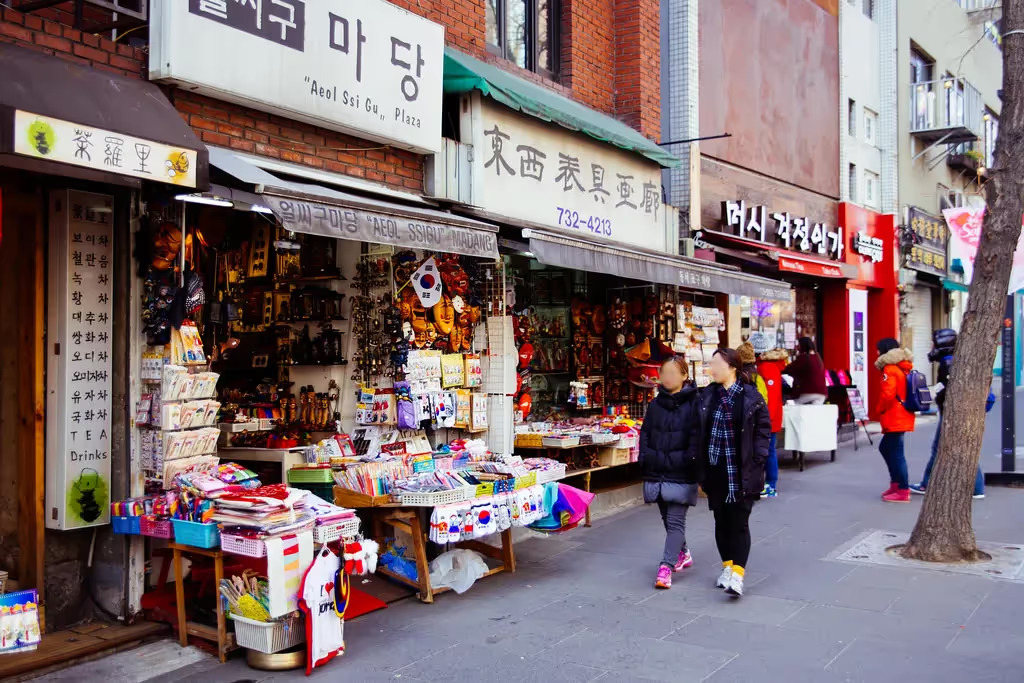A biweekly newsletter with public space news, resources, and opportunities.
A curated dispatch on all things public markets plus the latest announcements from the Market Cities Program.
Please note that these Hall of Shame nominations were written in a moment in time (most over a decade ago) and likely have since changed or even been transformed. If the above entry is now great, or still not so great, go ahead and comment below on how it has evolved or nominate it as a great place.


Between 1999 and 2000, Insadong-gil was redesigned to create a more inviting pedestrian-friendly environment. The city removed utility poles, widened sidewalks, added street planters, and repaved part of the street with traditional Korean black tiles. New street furnishings were engraved with historic tales paying homage to Seoul's cultural history. Combined with weekly closures to cars, these efforts have transformed Insadong-gil into the city’s prime pedestrian commercial corridor. The street is easily accessible by bus and subway and is located within walking distance of several other landmarks, including the famous Unhyeon Palace.
On Sundays, when vehicle access is restricted, brick-and-mortar businesses extend their activity onto the street with outdoor booths selling Hanbok (traditional Korean clothing), pajeon (pancakes) and Hanji (traditional paper). Street artists, including calligraphers and traditional dancers, take this opportunity to exhibit and perform on Insadong-gil, providing a lively diversion for shoppers and tourists alike.
The main street of the historic Insadong district in Seoul, Insadong-gil is the spine that connects the many small alleys that make up the neighborhood. Hundreds of years ago the street was a stream dividing the two ancient towns that give the district its name. It was a wealthy area until the early 20th century, when the Japanese occupation forced out many residents and the area became known for its antiques market. Since the 1950s the the street has become known for its mix of traditional and modern architecture along with its art galleries, souvenir shops, stationary shops, and traditional tea rooms. The street is a center for arts and culture in the city, and serves as a connection between ancient and modern Seoul.






*Please note that these Hall of Shame nominations were written in a moment in time (most over a decade ago) and likely have since changed or even been transformed. If the above entry is now great, or still not so great, go ahead and comment below on how it has evolved or nominate it as a great place.